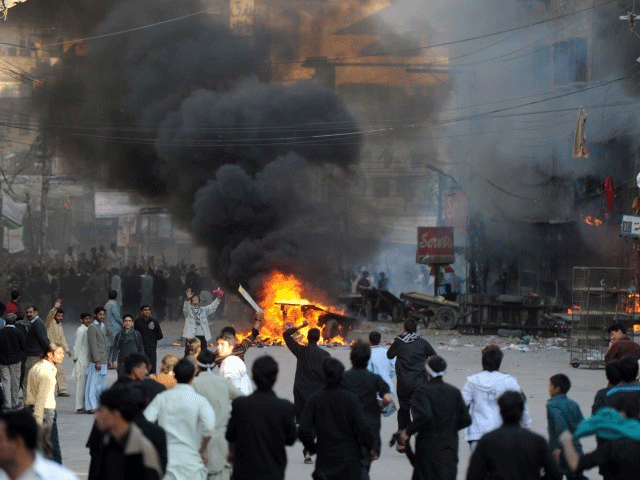
The Legacy of Mandela
I am not aware of the meaning of the name ‘Madiba’, but for me and millions of those who are against apartheid; Madiba, also known as Nelson Mandela, is a sign of courage, consistency, will and valor.
Whether it was North America or South Asia, Northern Ireland or Southern Africa, the sigil of Union Jack reached every where for plundering the natural resources of those regions and exploitation of cheap human resource. As a South Asian native, the history wouldn’t let me forget the deeds of English gentlemen of East India Company. Every caste and creed was the target of their brutalities, but the Muslims faced worst oppressions during the rule of Her Majesty on the Sub-Continent. Democratic values, humanitarian norms rendered useless in the prevention of the meaningless rage of invader Britishers. This was the time when the British Empire had spreaded its tentacles from the Eastern hemisphere to the West, from the South to the North, but then, the resolve of some leaders belonging to different areas dealt a severe blow to their designs, through rebellions, political movements and armed struggles: the era of slavery reached its end.
Mandela was one of those leaders.
Many biographies can tell about the different stages of his life and the difficult situations he faced. Born in Mvezo, Cape Province on 18th July 1918, Mr. Nelson Mandela grew up hearing his ancestral tales of resistance. He dreamt of leading a struggle, to free his tribal people from the tyrannical and racist clutches of white supremacists.
Nelson Mandela participated in various revolutionary and anti-apartheid movements before the era of his imprisonment. He spent almost 30-35 years of his life behind bars.
The following timeline highlights the brief details of the imprisonment years of Mr. Mandela:
5 August 1962: Arrested
7 November 1962: Sentenced for five years in a jail, on the charge of leaving the country without a passport. He began serving his sentence at the Pretoria local prison as the Prisoner number: 19476/62
27 May 1963: Mandela is transferred to Robben Island
12 June 1963: He is transferred back to Pretoria Local Prison
Prisoner number: 11657/63
11 June 1964: Mandela is convicted of sabotage with Walter Sisulu, Ahmed Kathrada, Raymond Mhlaba, Govan Mbeki, Elias Motsoaledi, Denis Goldberg and Andrew Mlangeni
12 June 1964: Received a life imprisonment sentence with Sisulu, Kathrada, Mhlaba, Mbeki, Motsoaledi, Goldberg and Mlangeni
13 June 1964: Arrives on Robben Island with Sisulu, Kathrada, Mhlaba, Mbeki, Motsoaledi and Mlangeni. Goldberg is sent to Pretoria as he is white
Prisoner number: 466/64
31 March 1982: Nelson Mandela is transferred to Pollsmoor Prison with Sisulu, Mhlaba and Mlangeni. They are joined by Kathrada in October.
Prisoner number: 220/82
12 August 1988: Mandela is taken to Tygerberg Hospital where his tuberculosis is diagnosed.
31 August 1988: He is transferred to Constantiaberg Medi-Clinic.
7 December 1988: Then he is transferred to Victor Verster Prison.
Prisoner number: 1335/88
11 February 1990: Nelson Mandela is released from Victor Verster Prison.
The leader who spent his entire youth imprisoned behind jail bars, Mr. Mandela accepted the white people on his motherland, but he got the equal laws and equal rights for his black people. The ethnic prosperity in Africa today, is due to the efforts put in by Madiba. As a leader of African National Congress, Madiba is the leader of all colors, and his burial today
Released in 1990’s the Mandela put his all efforts for a prosper Africa and he became an African National Leader, a leader of all colors and today at the day of his burial, the humanity sorrows.








